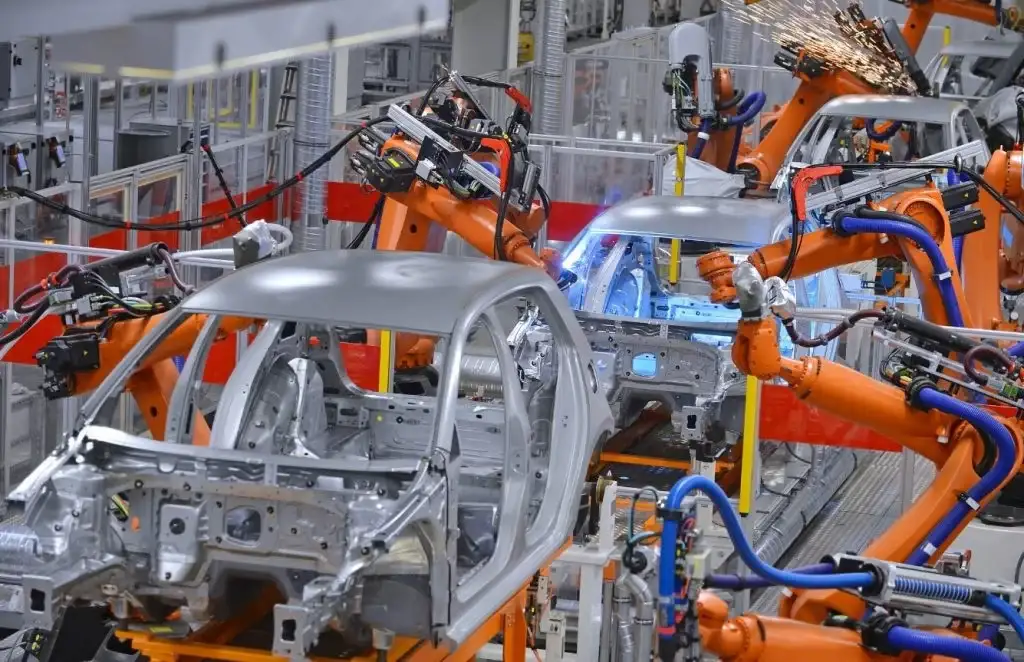Introduction
In the world of cigarette packaging, ensuring precise quality control is pivotal for success. This article explores the advantages of integrating an automatic visual inspection systems into the manufacturing process. Embarking on the integration of automatic visual inspection systems in cigarette packaging presents a dynamic shift in manufacturing. Delve into this exploration of challenges, benefits, and strategic solutions, offering a concise guide for industry players navigating the terrain of advanced quality control.
Efficiency Boost
Automatic visual inspection systems offer real-time capabilities, significantly speeding up production lines. By minimizing human error, these systems contribute to accelerated production timelines, making operations more efficient.
Quality Control Mastery
Detecting defects and abnormalities is a complex task, demanding acute attention to detail. Automatic inspection systems excel in precision, ensuring consistent product quality and compliance with industry standards.
Financial Gains
Minimizing waste is crucial for any manufacturing process. Automatic visual inspection identifies defects promptly, reducing rework and costly recalls. While the initial investment is notable, the long-term financial gains far surpass the expenses.
Regulatory Harmony
The tobacco industry is subject to strict regulations, necessitating compliance. Automatic visual inspection systems assist in legal compliance, ensuring product safety and preventing penalties, thereby fostering a reputation for reliability.
Customer Satisfaction Elevation
Delivering a flawless product is fundamental for customer satisfaction. Automatic inspection builds consumer trust, fostering long-term brand loyalty by consistently providing high-quality products.
Technological Integration
Leveraging cutting-edge technologies like computer vision, automatic visual inspection systems adapt to evolving industry standards. This ensures manufacturers stay at the forefront of technological advancements, maintaining a competitive edge.
Challenges and Solutions
Despite the benefits, challenges may arise during implementation. Addressing potential drawbacks and continuous improvement in inspection systems are crucial for successful integration.
Real-world Examples
Numerous companies in the cigarette packaging industry have experienced success with automatic visual inspection systems, showcasing positive impacts on operations and overall quality.
Future Trends
Anticipated advancements in inspection technology include improvements in speed, accuracy, and overall system efficiency. Staying ahead of these trends is essential for manufacturers to remain competitive.
Industry Adoption
Exploring the current status of automatic inspection in the cigarette packaging industry reveals the potential for widespread adoption, benefiting both manufacturers and consumers.
Challenges in Implementing Automatic Visual Inspection Systems in Cigarette Packaging
- Initial Investment: Balancing Cost and Long-term Gains : Manufacturers may hesitate due to the perceived upfront cost of implementing automatic visual inspection systems.
- Technological Learning Curve: Navigating Staff Adaptation : Staff accustomed to traditional processes may face a learning curve when adapting to new technologies.
- Integration into Existing Processes: Ensuring Seamless Workflow : Integrating inspection systems into existing processes requires meticulous planning to minimize disruptions and maintain workflow efficiency.
- Potential System Drawbacks: Addressing Challenges Promptly : Despite overall benefits, certain systems may present specific challenges or drawbacks that require prompt attention.
- Industry-wide Acceptance: Encouraging Adoption : Realizing the full benefits of these systems depends on achieving industry-wide acceptance and widespread adoption.
- Varied Packaging Materials: Configurability for Diverse Needs : Ensuring adaptability to different packaging materials poses a challenge for achieving universal system effectiveness.
- Regulatory Compliance: Safeguarding Against Legal Implications : Maintaining compliance with ever-evolving industry regulations poses a continuous challenge.
- Resistance to Change: Cultivating a Positive Shift : Overcoming resistance from staff accustomed to traditional processes can hinder the smooth implementation of new systems.
Implementation Considerations
To successfully integrate automatic visual inspection systems, manufacturers must follow specific steps, provide training and support for staff, and maximize potential benefits.
Strategic Solutions for Successful Implementation
- Balancing Cost and Long-term Gains : View the initial investment as a strategic long-term gain that surpasses the immediate costs, considering the significant return on investment over time.
- Navigating Staff Adaptation : Implement comprehensive training programs and provide ongoing support for staff adaptation, empowering them with the skills needed for effective system utilization.
- Ensuring Seamless Workflow : Plan and execute the integration carefully, considering existing workflows and minimizing disruptions, creating a roadmap for smooth and efficient implementation.
- Addressing Challenges Promptly : Regularly assess system performance, address identified issues promptly, and stay informed about updates, fostering a proactive approach to challenges.
- Encouraging Adoption : Share success stories, industry case studies, and collaborate with regulatory bodies to promote the advantages, creating a positive narrative around adoption.
- Configurability for Diverse Needs : Ensure the inspection system is configurable to handle a variety of packaging materials, conducting thorough testing to validate its effectiveness across diverse types.
- Safeguarding Against Legal Implications : Stay updated on regulatory changes, maintain documentation, and conduct regular audits to guarantee ongoing compliance, ensuring a proactive stance towards legal requirements.
- Cultivating a Positive Shift : Foster a positive attitude towards change through effective communication and involve employees in the transition process, making them active participants in the shift.
Conclusion
In conclusion, the benefits of using an automatic visual inspection systems in cigarette packaging are substantial. Encouraging industry-wide adoption is not just advisable but necessary for staying competitive in the evolving landscape of manufacturing. For further inquiries or a demo, you can Contact Trident Information Systems. Follow our LinkedIn page for the latest insights and updates on how VIS are revolutionizing Cigarette Manufacturing Industry.
FAQs
- Is the initial investment in automatic visual inspection systems justified?
- Absolutely. The long-term cost savings and quality improvements justify the initial investment.
- How do these systems handle different packaging materials?
- Automatic visual inspection systems are adaptable and can be configured to handle various packaging materials.
- Are there any specific regulations governing the use of these systems in the tobacco industry?
- While specific regulations may vary, the overall aim is to ensure product safety and quality.
- Can smaller manufacturers benefit from automatic visual inspection systems?
- Yes, the benefits are not exclusive to large manufacturers. Smaller companies can also see improvements in efficiency and quality.
- What is the typical learning curve for staff when implementing these systems?
- The learning curve depends on the complexity of the system but is generally manageable with proper training and support.



